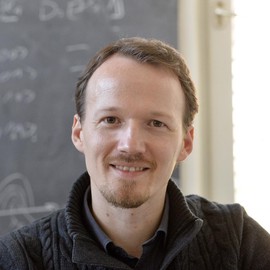Quantum Simulating Lattice Gauge Theories — High-Energy Physics at Ultra-Cold Temperatures
Abstract
Gauge theories are at the heart of our modern understanding of physics, but solving their out-of-equilibrium dynamics is extremely challenging for classical computers. This difficulty is currently spurring a worldwide effort to solve gauge theories on dedicated quantum computing devices. In this webinar hosted by the Quantum Computing and Communication Technical Group, Philipp Hauke will discuss recent progress towards quantum simulation of gauge theories using ultracold atoms, trapped ions, and superconducting qubits. First, recent breakthrough experiments[ 1, 2] will be presented, one of which has realized a many-body gauge theory in a 71-site Hubbard model and has certified the fulfilment of Gauss’s law for the first time[ 2]. Moreover, ongoing theoretical efforts in the Hauke group, towards quantifying and mitigating the influence of microscopic violations of the local gauge symmetry[ 3, 4], will be discussed. Through these discussions, the talk aims at outlining a roadmap towards mature and practically relevant quantum simulation of gauge theories.
[1] A. Mil, T. V. Zache, A. Hegde, A. Xia, R. P. Bhatt, M. K. Oberthaler, P. Hauke, J. Berges, F. Jendrzejewski, Realizing a scalable building block of a U(1) gauge theory with cold atomic mixtures, Science 367, 1128-1130 (2020).
[2] Bing Yang, Hui Sun, Robert Ott, Han-Yi Wang, Torsten V. Zache, Jad C. Halimeh, Zhen-Sheng Yuan, Philipp Hauke, Jian-Wei Pan, Observation of gauge invariance in a 71-site quantum simulator, Accepted in Nature, arXiv:2003.08945 [cond-mat.quant-gas] (2020).
[3] J. C. Halimeh, P. Hauke, Reliability of lattice gauge theories, Phys. Rev. Lett.125, 030503 (2020), Staircase prethermalization and constrained dynamics in lattice gauge theories, arXiv:2004.07248 [cond-mat.quant-gas] (2020), Origin of staircase prethermalization in lattice gauge theories, arXiv:2004.07254 [cond-mat.str-el] (2020).
[4] J. C. Halimeh, H. Lang, J. Mildenberger, Z. Jiang, P. Hauke, Gauge-Symmetry Protection Using Single-Body Terms, arXiv:2007.00668 [quant-ph] (2020).
